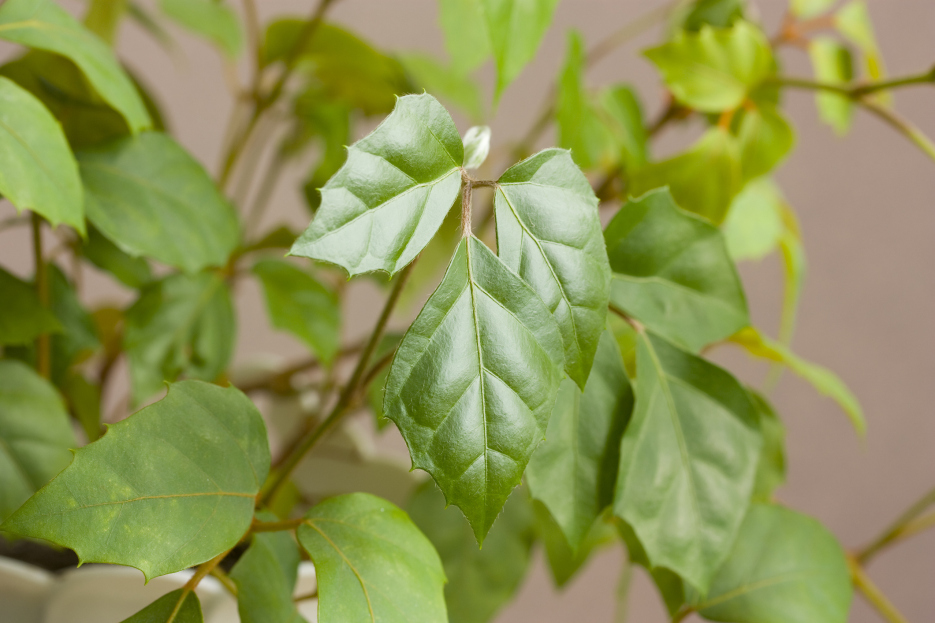
Cissus rhombifolia, commonly known as Grape Ivy, is a versatile, easy-care houseplant that brings a touch of lush greenery to any space. With its delicate, vine-like growth and textured, grape-leaf-shaped foliage, this member of the grape family (Vitaceae) is perfect for hanging baskets, climbing trellises, or trailing along shelves. If you’re looking for a low-maintenance, elegant addition to your plant collection, Grape Ivy is a fantastic choice. Let’s dive into how to keep this resilient vine thriving.
Grape Ivy thrives in bright, indirect light. It’s a bit of a chameleon, adapting to moderate light conditions as well — making it ideal for homes and offices that aren’t flooded with sunlight. However, avoid placing it in direct sunlight, as this can scorch the leaves, leading to unsightly brown patches. If light is too low, the plant may grow slower, with leggy, sparse vines. A spot near an east or north-facing window is perfect.
Cissus rhombifolia enjoys consistent moisture but doesn’t like sitting in soggy soil. Water thoroughly when the top inch of soil feels dry, ensuring excess water drains out. In the warmer months (spring and summer), water more frequently to support active growth. During fall and winter, cut back on watering, allowing the soil to dry out a bit more between waterings. Overwatering can lead to root rot, while underwatering might cause leaf drop — balance is key.
Grape Ivy prefers average room humidity but appreciates a boost in drier climates or during winter when indoor air gets dry. If you notice browning leaf edges, misting the plant or placing a humidifier nearby can help. Temperature-wise, it’s quite flexible, thriving between 60-75°F (15-24°C). Just make sure to avoid cold drafts or temperatures below 50°F (10°C), which can cause the plant to suffer.
A well-draining, peat-based potting mix works best for Cissus rhombifolia. A standard houseplant soil blend with added perlite or sand is ideal to ensure excess water doesn’t linger in the roots. If repotting (typically every 2-3 years), choose a container with drainage holes and size up only slightly to prevent too much moisture retention.
Feed your Grape Ivy a balanced liquid fertilizer (diluted to half strength) every 4-6 weeks during the growing season (spring and summer). Skip fertilizing in fall and winter when growth naturally slows down. Over-fertilizing can lead to leggy growth or salt buildup in the soil, which can harm the roots.
Cissus rhombifolia benefits from regular pruning to maintain a bushy, full appearance. Trim back any leggy vines or dead leaves to encourage new growth and prevent the plant from becoming scraggly. If you want a more compact look, pinch off the growing tips periodically — this helps the plant branch out more densely.
Want to share your Grape Ivy with friends? Propagation is simple. Snip a healthy stem cutting (4-6 inches long) with a few leaves and place it in water or moist potting soil. In water, roots typically emerge within a couple of weeks. Once roots are a few inches long, transfer the cutting to soil.
Good news! Cissus rhombifolia is considered non-toxic to cats and dogs, making it a safe choice for pet-friendly households.